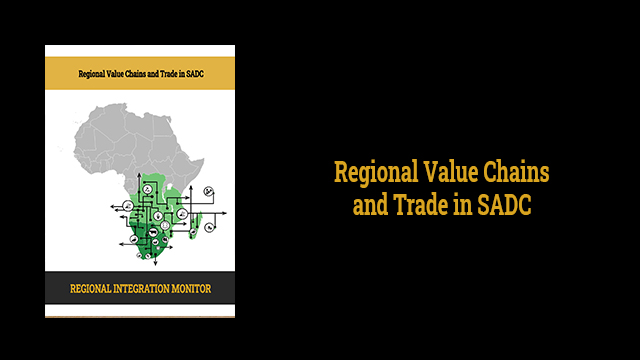Policy Spotlight: Rules of Origin in SADC
The development of GVCs has brought the importance of rules of origin (RoO) to the fore, as they are required in any preferential trade agreement (PTA) in order to confirm that goods being traded under preferential tariffs originate from an eligible country. RoO are developed to prevent trade deflection, where countries bypass higher tariff rates in a member state in a PTA by importing goods through a secondary member state with lower tariffs[26]. With the development of GVCs however, goods do not simply originate from one country and even when the final product does originate from one location, inputs are usually sourced from multiple locations. Hence RoO have become an important tool governing regional trade, especially given the overlapping membership to regional economic communities and the proliferation of PTAs. RoO are primarily used to address trade challenges and to compliment various industrial policy instruments.In SADC the SADC Rules of Origin: Exporter’s Guide Manual is aimed at providing a simple and transparent criterion for determining the eligibility of goods under the SADC Free Trade Area (FTA). The SADC RoO are used to distinguish between goods produced within the SADC region and eligible for the preferential tariff, from those originating from outside the region which attract the full import duty rates[27]. Following the formation of the SADC FTA, regional trade and economic integration was complicated by overlapping memberships of SADC member states across the region which resulted in contradictory trade obligations. Although the RoO provided clarity within SADC they also forced producers to source inputs from within the region, which drove up production costs in some instances, thereby increasing barriers to entry for new producers in the market[28]. Also, the compilation of regional trade statistics is adversely affected by trade deflection which may hamper the monitoring, evaluation and development of regional trade and economic integration. In some instances, the absence of clear RoO poses a greater risk of revenue miss-allocation, such as in the case of SACU, where intra-regional trade is used to determine member state shares of the customs duty revenues[29].
The RoO under the SADC Trade Protocol are not only intended for authentication but also serve as a broader development tool. The developmental function of RoO is justified by Article 2 of the Trade Protocol, which identifies the enhancement of economic development, diversification and industrialisation of the region as an objective of the protocol[30]. In light of this, there has been strong pressure to use RoO to encourage the use of local raw materials in downstream processing industries. Therefore, the SADC RoO allow for designating goods as originating in SADC, even if they are not wholly produced within the region. Goods are considered as originating in SADC as long as they have been worked on locally, such that there is a change in the good’s tariff heading categorisation; or if local works add at least 35.0% to the ex-factory value to the goods[31].
However, these provisions do not resolve all problems associated with trade deflection and other related trade challenges. Balancing the need to determine eligibility of goods for preferential treatment with the ambitions of regional industrialisation, development of regional value chains and economic integration is very complex. As the process of regional integration consolidates regional economic communities across the continent, and as the set of administered preferences becomes more complex, the role of RoO becomes ever more important and complicated. Moreover, given that these rules need to be dynamic in order to respond to real-time challenges of regional trade and economic integration, the lag between developing robust rules and capacitating customs administrations makes the objectives of RoO ever more unattainable.
By Khanyisa Mchavi
[26] Erasmus, H., Flatters, F. & Kirk, R. 2004. Rules of Origin as Tools of Development?: Some Lessons from SADC, Queen’s University: Ontario. Available At: http://qed.econ.queensu.ca/ [Last Accessed: 25 November 2016].
[27] SADC 2003. SADC Rules of Origin: Exporter’s Guide Manual, Southern African Development Community: Gaborone. Available At: https://www.sadc.int/ [Last Accessed: 30 November 2016].
[28] Kajuna, K. 2016. Connecting to the World through Regional Value Chains, on the International Centre for Trade and Sustainable Development Website, viewed on 30 November 2016, from http://www.ictsd.org/.
[29] SACU 2010. Study on an Assessment of Trade Data Limitations Amongst SACU Member States, Southern African Customs Union: Windhoek. Available At: http://www.sacu.int/ [Last Accessed: 30 November 2016].
[30] SADC 1996. Protocol on Trade in the Southern African Development Community Region, Southern African Development Community: Gaborone. Available At: http://www.sadc.int/ [Last Accessed: 30 November 2016].
[31] SADC 1996. Protocol on Trade in the Southern African Development Community Region, ibid.
The December 2016 issue focuses on regional value chains and industrialisation in Southern Africa – What are regional value chains? how do they operate? which ones exist in the SADC region? which ones show greatest prospects in Southern Africa? The PESA Regional Integration Monitor, Dec 2016 examines these questions.



























